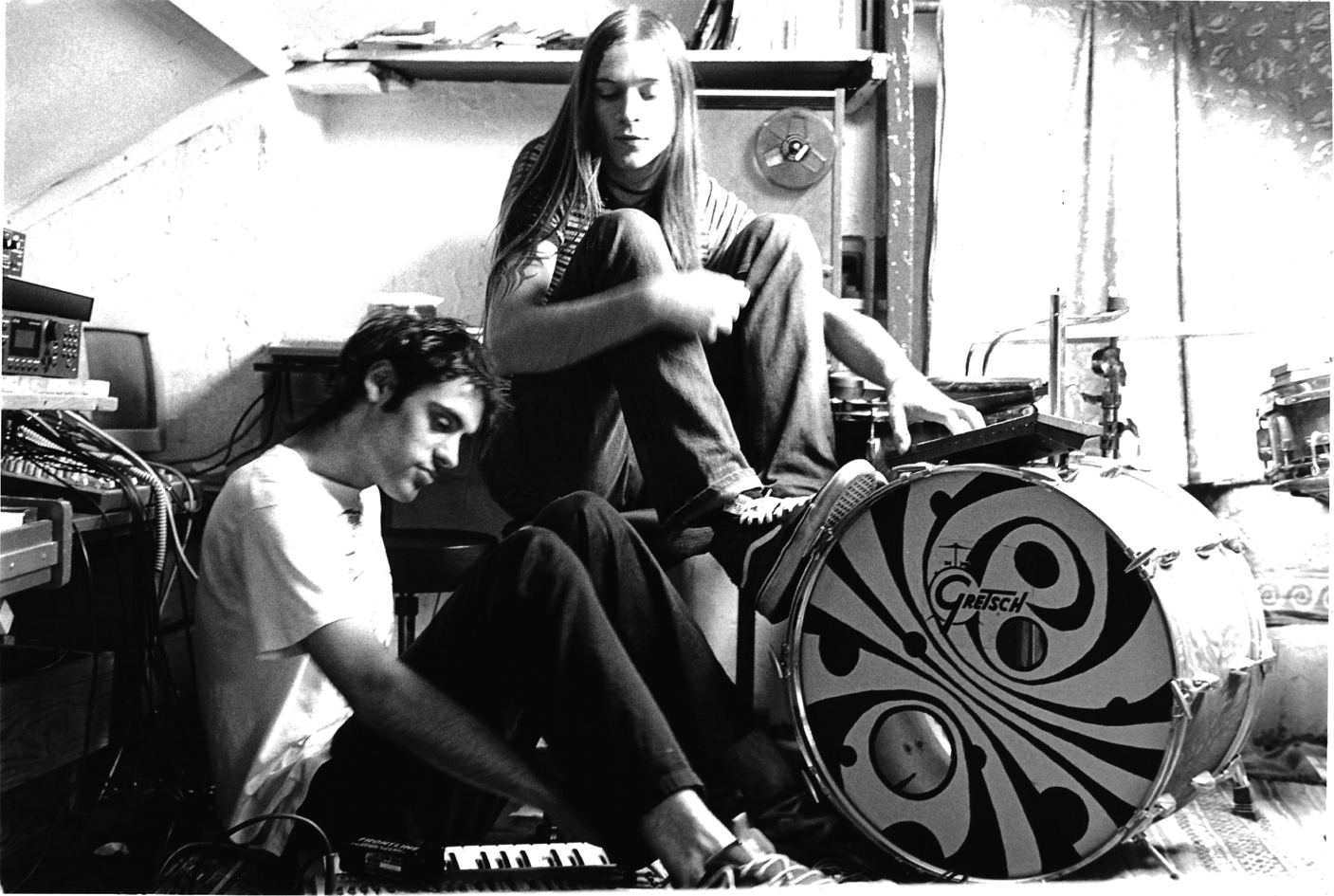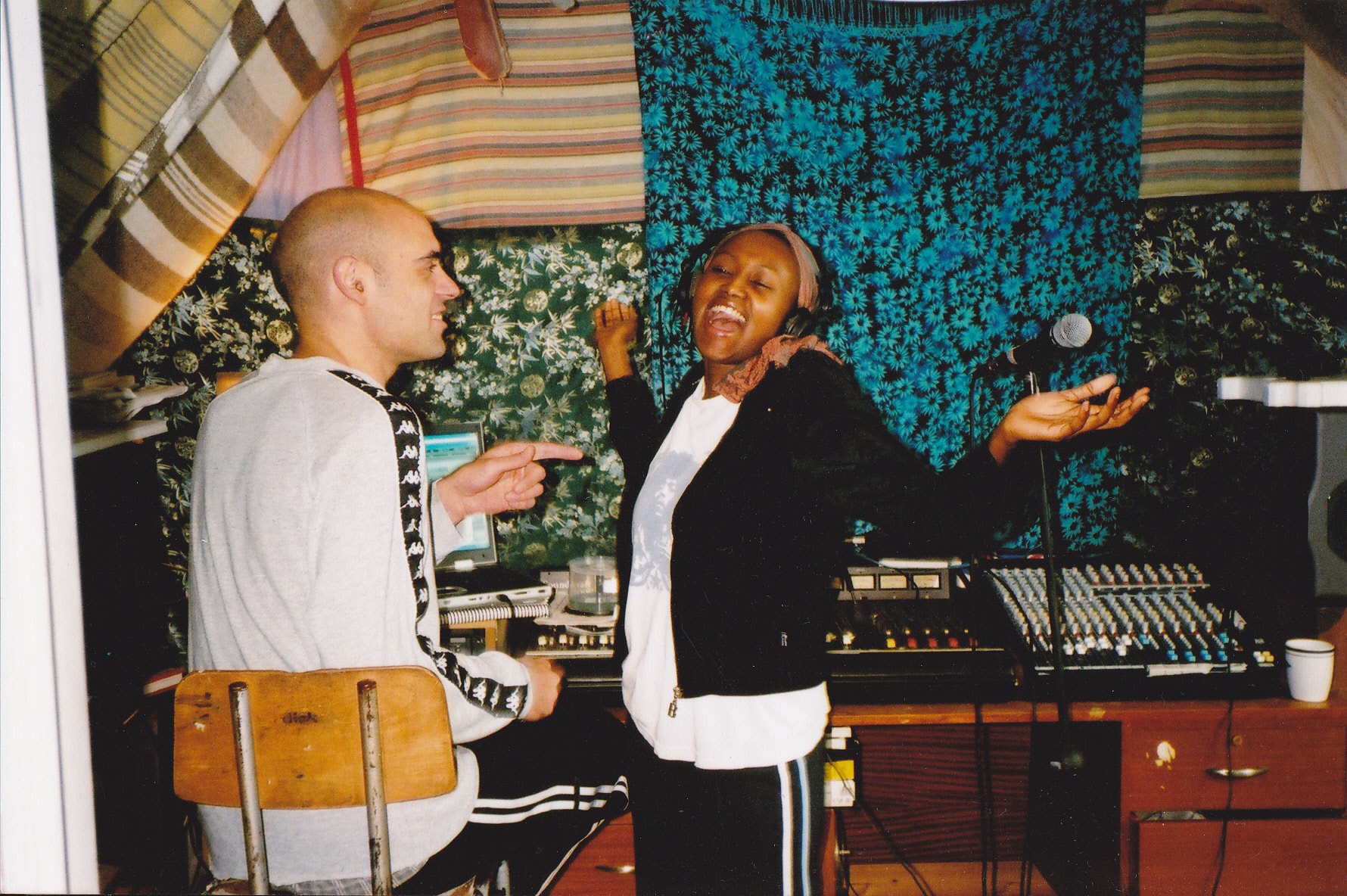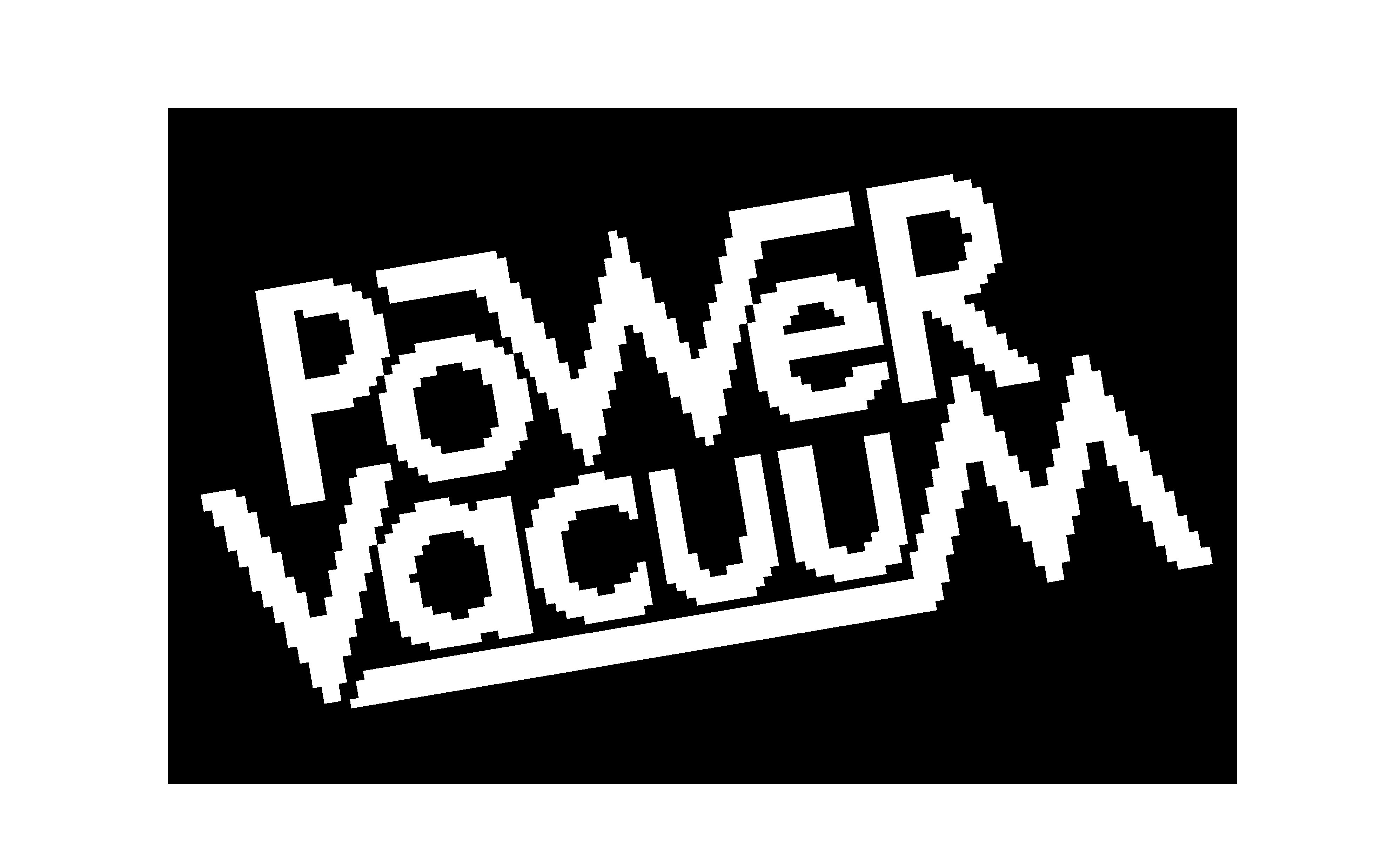Interview: Power Vacuum’s Milo Smee
The man known as Bintus—among many other pseudonyms—refuses to be pinned down.

Interview: Power Vacuum’s Milo Smee
The man known as Bintus—among many other pseudonyms—refuses to be pinned down.

Kruton, Binary Chaffinch, Chrome Hoof,Invincible Scum, Zirkon and Booze: Milo Smee’s lengthy discography reflects a man with a penchant for a comical pseudonym. Now producing under the Bintus alias, a reference to an exotic-food shop located near to his studio, Smee’s latest project is Power Vacuum, a small vinyl-focused imprint with a name that can traced back to a toilet re-installation at Golden Gate, the Berlin nightclub.
“I was looking for a label name for a long time,” recalls Smee. “And the manager explained that the work was only being done now because the other two managers were on holiday, which gave him the authority do it without their consent. He called it a “power vacuum”—and it just sounded great, mainly because in his accent the v sounded like a w!
Despite those humble beginnings, Power Vacuum has quickly evolved into a widely-respected imprint, acclaimed for its acid-fueled techno releases and supported publicly by the likes of Surgeon, Ben UFO and Blawan. A clear symbol of the label’s growing stature, Power Vacuum’s latest EP comes from Cylob (a.k.a. Chris Jeffs), the legendary Berlin-based producer who also contributed a track to the label’s Vectors 2 compilation. Following the EP’s June 23 release, XLR8R sat down with Smee to hear the story behind Power Vacuum, reflect on its success and learn more about the Cylob release.
“I am definitely surprised by Power Vacuum’s progress,” says Smee, smiling—though he’s noticeably reluctant to label the project a success. “I have always had this inkling that I wanted to start a label, but it was never the right time. And then when I left my project Chrome Hoof in 2011, I suddenly had loads more time on my hands. It was mainly because I want music that I can use in my DJing and, at least initially, it was also a platform to give me creative freedom for the new Bintus material that I had just started doing.”

That may be true—but it’s also clear that the motivations behind Smee’s latest project are far more complex than just a desire for new music for his sets. As he elaborates on his lengthy back story, it’s clear that Smee has long possessed a love for all things musical, an obsession that can be traced back to his earliest years as a child growing up on the River Blackwater in Essex.
“Although I began producing in 1995, when I look back at all the things that happened before that, I feel like there was no other option besides music,” Smee says, before pausing to reflect. Taking a sip of his water, he explains how boredom caused him to spend hours jamming with his next-door neighbor on the antique drum set that his uncle left at his parent’s house. “I didn’t have much to do [besides play music] so I used to just go round to my neighbor’s house and mess around on his synthesizers. I think that was a massive thing, because subconsciously the seed was planted. I think that is probably why I am doing what I am doing now.”
“The seat was still warm so Suzi Quatro’s residual bottom heat transferred into my own—and it was a nice thing.”
With an interest in music technology firmly established, Smee’s exploration continued when he met the rocker Suzi Quatro and Mark Summers (of house act Quartz fame) during a three-week school work experience program at a local recording studio. “That, for me, was big turning point in wanting to do music seriously,” recalls Smee. “All I wanted to do was make music. There was absolutely nothing else that I wanted to do,” he continues, trying to mask a grin as he explains how he met Quatro. “We met in the corridor as I was going to the toilet—which was in an outhouse and it was a cold November. The seat was still warm so Suzi Quatro’s residual bottom heat transferred into my own—and it was a nice thing. Normally I would say that sort of thing is weird and unpleasant—but because it was her, it felt quite nice to be honest!”
It’s this kind of infatuation that has formed the basis for Smee’s career, leading him to take a Design and Media Arts course to “avoid specializing in one discipline,” dropping out just one year later, and then to decline a promising job opportunity with Sony Music in the hope that a small record deal—one that he believed was a done deal—would eventually lead to greener pastures. “I missed out on that job for a record deal that didn’t really exist,” he says. “As a 23 year old, I didn’t even read the bloody contract—I just wanted to sign the deal and be a musician. Of course, my mind boggles as to where I could be now [if I had gone to Sony]. I’ve no doubt I could be in a pretty sweet job—but I don’t kick myself because I made the right decision at the time.”
“Even to this day, it amazes me that you can plug a wire into a hole, and you don’t know what sound is going to come out.”

And since then, Smee has satisfied his musical cravings with a string of production aliases, starting with Kruton in 1995 and then Kactus, a heavy-metal collaboration with his youngest brother, in 1996. “For three years I was on the dole so I had a lot of time to work on it,” he says. “Looking back, it was a golden time in terms of how much time I spent making music in my attic.. It gave me immense pleasure experimenting with these sounds by combining frequencies and rhythms. Even to this day, it amazes me that you can plug a wire into a hole, and you don’t know what sound is going to come out. It is so infinitely variable that I could happily live 20 lifetimes doing that and still never feel even nearly satisfied.”
Kactus’ first release came out in 1997, coinciding with “Turnip in the Mist,” Smee’s first electro/breaks release under the Kruton moniker. While Kactus quickly evolved into Chrome Hoof with the addition of further members, close friend Mark Broom continued to release Kruton material via his Unexplored Beats (a.k.a. UXB) and Pure Plastic imprints, including one—”Smallfish Pa.track2″ off 2001’s Granular PlateauxEP—featuring an Autechre remix. “I don’t know how it [the Autechre remix] came about, but it was amazing,” say Smee. “Some of the stuff Mark was putting out was absolutely ridiculous—it wasn’t structured or anything.”

Despite that kind of career highlight, there is a sense that Smee may have spread his focus too thinly. Outside of Kactus/Chrome Hoof and Kruton, Smee also released under a number of other monikers—including Binary Chaffinch, an alias reserved for his softer, more disco works, like 2007’s “False Energy“. While Smee’s tenure in Chrome Hoof ended in early 2011 following a successful European tour, and Kruton has remained dormant following a string of releases on Dissident in 2007 and 2008, Smee now releases more dance-orientated music under the Bintus name and plays drums in an instrumental band called Clean & Jerk. “Maybe I should focus on just one thing, but too many unexecuted ideas in these different genres wont allow me, and I don’t want to stop that,” says Smee.
For now, however, focus remains on Power Vacuum. Running a label doesn’t come naturally to Smee, and he can only draw experience from when he self-released a Chrome Hoof single in 2000, and from working closely with the Pure Plastic and Unexplored Beats labels. “I’m not a great organizer or hustler, and I still struggle with the whole concept of social media, but I do think I have a fairly strong idea about the music selection,” Smee explains. “I’ve seen things come and go, and hope to now have reasonable defenses from the relentless hype outlets—and this critical aspect has certainly helped me a lot.”
“It’s too much work to spend time thinking about how to present it in a slick or professional way, as that implies certain standards should be met—and there’s enough of that already.”
Power Vacuum’s notoriously witty press releases are motivated by Smee’s animosity towards PR’s fondness for adjectives, and the emphatically boisterous logo and rough techno output is a reflection of the label head himself. Almost by accident, Smee has stumbled upon a successful formula that has facilitated the creation of a strong brand identity in an already oversaturated market. “It wasn’t planned,” he says. “I’m just trying to be honest in an attempt to present to people music I find interesting and workable, like most people running a label. I do think this humorous side is important to Power Vacuum, and I understand people could see this as me trying to be weird or whatever, but that’s not it. It’s just the way my mind works. This is always the way I have done things, and that extends into the music, too—doing things with audio which are silly or amusing. I don’t expect everyone to like it, and I am sure that people will see it as pathetic and childish, but I get a lot of pleasure out of being pathetic and childish. I just don’t think about it too much. It’s too much work to spend time thinking about how to present it in a slick or professional way, as that implies certain standards should be met—and there’s enough of that already.”
Smee’s keen to point out that while the image of the label today was far from premeditated, he has long held a very specific vision regarding the music itself. “I was looking for this tough sound to remind me of all the techno I used to love in 1991, but also slightly twisted,” he says. “The visual identity of Power Vacuum is so strong because of my mate Fergus created this loud logo—and this identity has informed the music, in some ways.”

As demonstrated by “Corrosion Control,” Smee’s first release under the Bintus moniker, the label today focuses on three old-school blueprints, Smee says: “Rough techno, electro and acid house. I know I want music that can be played in clubs. But in my own head, I’m moving away from the rolling techno jams, even though that’s pretty unbeatable on the floor. For example, the Cylob EP is a lot more crafted and composed. It has a lot of structure with some beautifully melodic content.” The seven-track release will inevitably impact the profile of the label; considered to be one of the finest electro pioneers to emerge in the past 20 years, Cylob’s decision to release his first vinyl EP for over a decade on Power Vacuum is a mark of the label’s progress.
Here’s how it came about: After being connected through a mutual friend, Smee wrote to Cylob asking for a track and reassuring him about his own bad experiences with labels. “He then sent me about 170 sketches—and I listened to them all for a couple of weeks, making notes and really thinking about them in as scientific a way as I can get,” Smee says. “He is a master, flexing his analog modular set-up, and there was some exceptional rhythm and melody work. But I fear people are going to miss the brilliance of this release, because its very rich and irregular—and you need time to digest it, which people don’t have much of.”
Smee has no intention of ending his personal musical exploration anytime soon. Loose plans are already in place to begin a new series on a Power Vacuum sister label as another vehicle for Smee to discover new musical realms, while he also intends to further examine the crossover between live instruments and electronics. On top of this, Smee also points out that his work as Bintus will continue, and hints at the possibility of some unreleased Kruton material.
It is clear that music has always been an entirely personal venture for Smee, one that he has pursued for nobody but himself. Despite the challenges, he remains undeterred and wonderfully enthusiastic, clearly excited by the Cylob release and his other impending projects—and his love for music is as strong as when he first discovered the drum kit in his parent’s house over three decades ago.
Cylob’s Inflatable Hope EP is out now on Power Vacuum.

